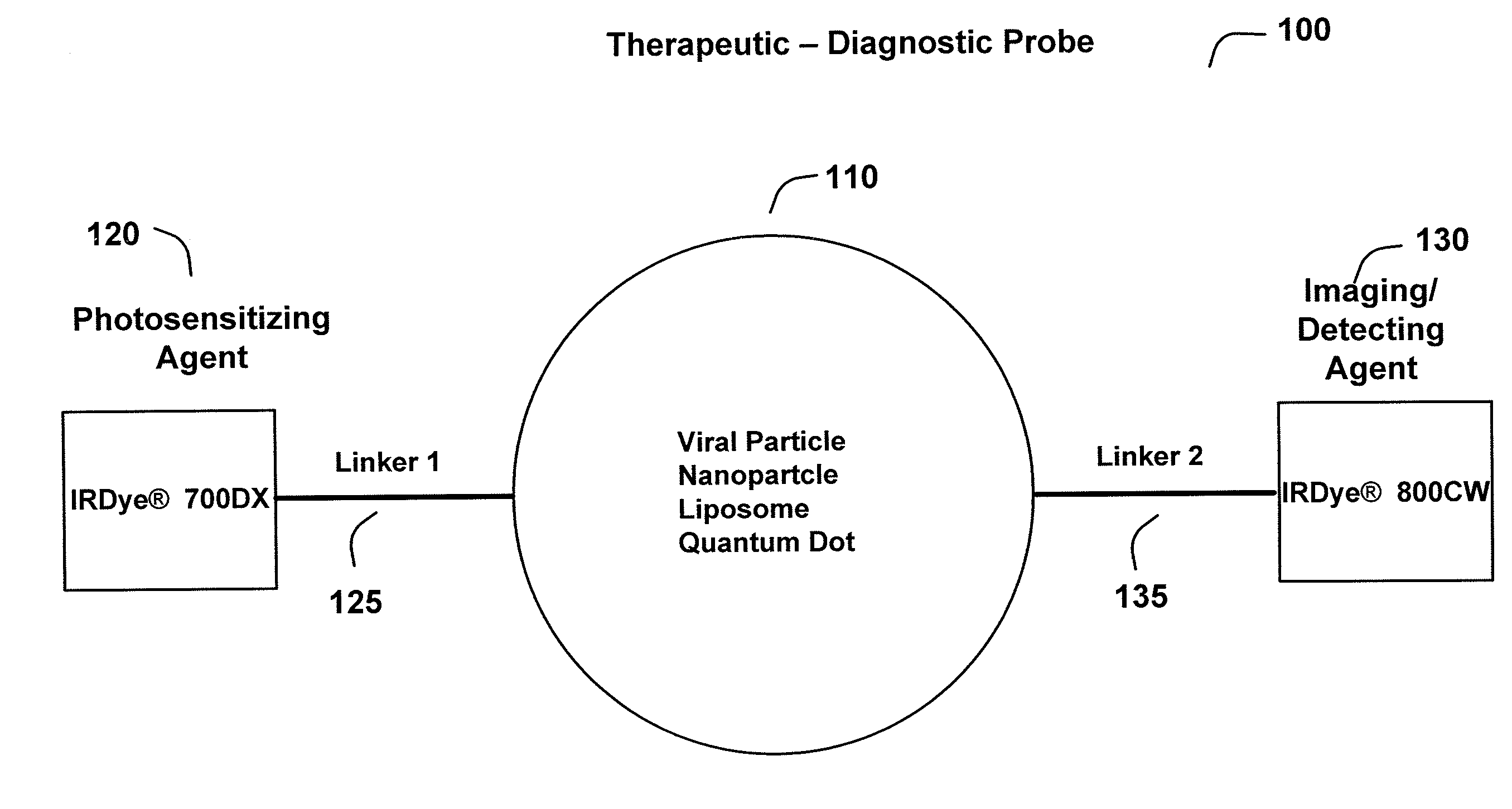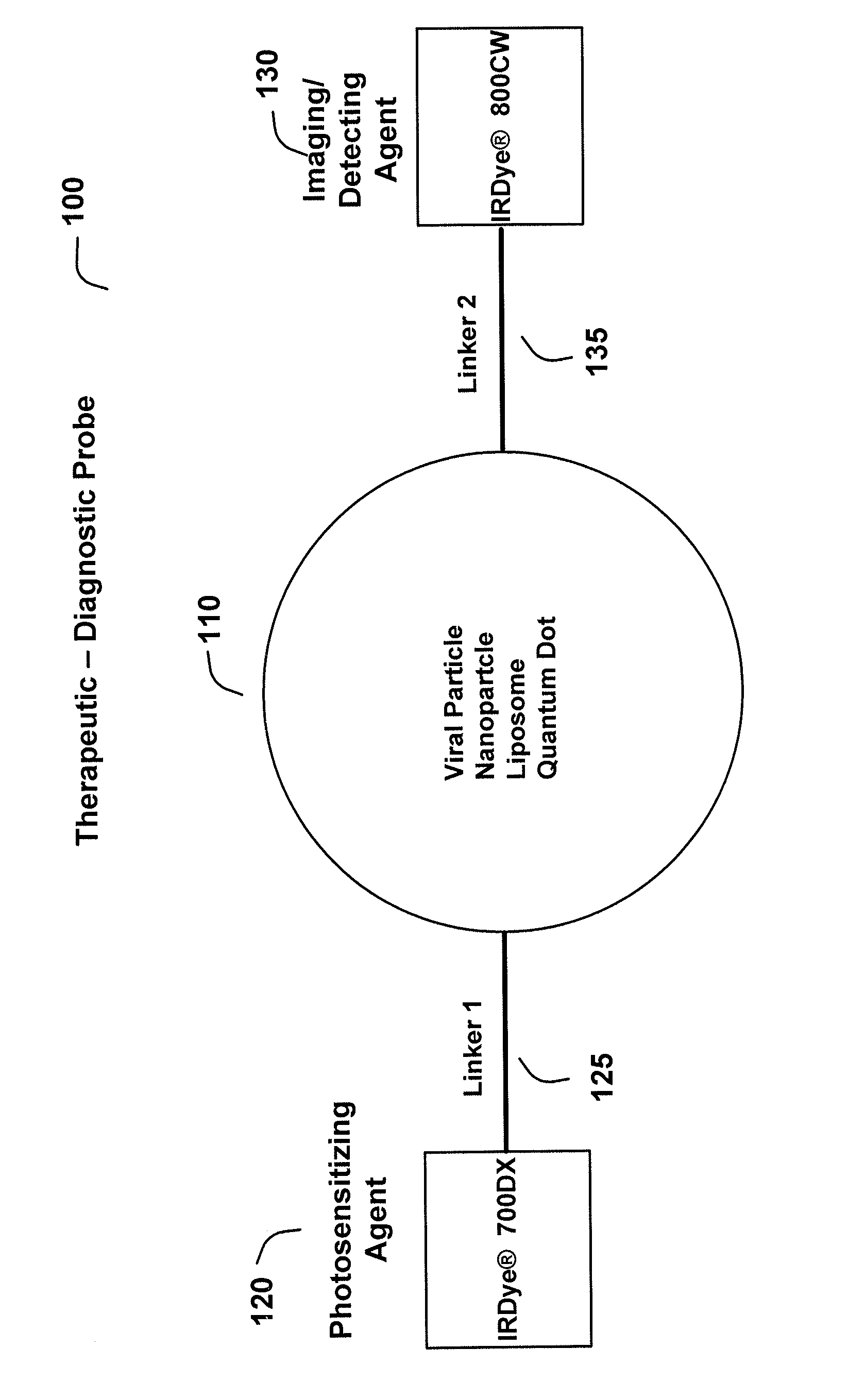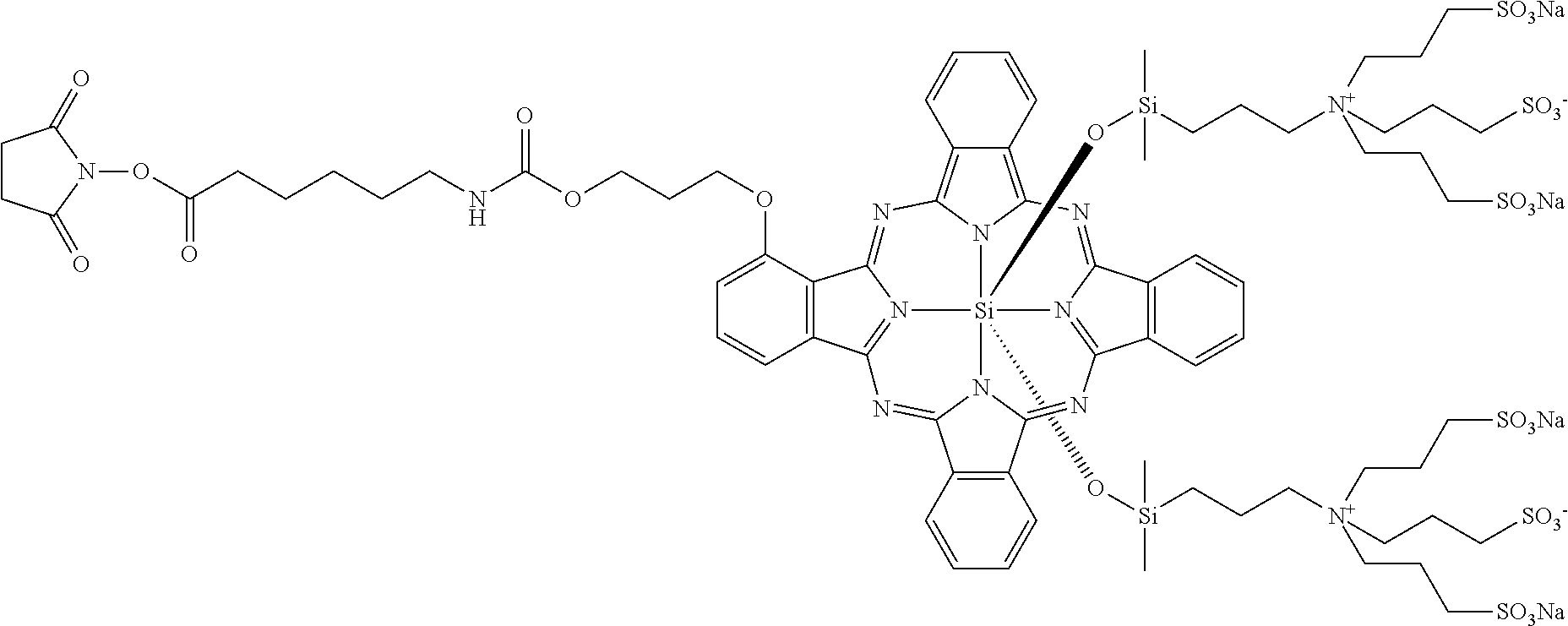Therapeutic and diagnostic probes
a technology of diagnostic probes and probes, applied in the field of diagnostic probes, can solve the problems of lack of effective tissue localization of current photodynamic therapeutic agents
- Summary
- Abstract
- Description
- Claims
- Application Information
AI Technical Summary
Benefits of technology
Problems solved by technology
Method used
Image
Examples
example 2
Therapeutic and Diagnostic Probes Containing a Viral Particle and a Targeting Moiety
[0096]This example provides an exemplary embodiment of the present invention, in particular, a therapeutic and diagnostic probe based on a viral particle that selectively binds to EGFR expressing cells, such as cancer cells.
[0097]The virus-like particle based probe is generated according to the method described in Example 1 with modifications to express a targeting moiety, such as EGF on the surface of the probe. The EGF protein can be labeled on free amine groups using an NHS ester derivative of IRDye® 700DX or IRDye® 800CW (LI-COR, Lincoln, Nebr.). The viral-like particle can also be linked to the dye(s) through a linker as described above.
[0098]The probe is administered to the subject, e.g., the human subject, by intravenous injection or by direct injection into a solid tumor containing EGFR-overexpressing cells. The EGF probe then binds to EGFR on the surface of cancer cells. Near-infrared fluore...
PUM
| Property | Measurement | Unit |
|---|---|---|
| Cell death | aaaaa | aaaaa |
| Therapeutic | aaaaa | aaaaa |
Abstract
Description
Claims
Application Information
 Login to View More
Login to View More - R&D
- Intellectual Property
- Life Sciences
- Materials
- Tech Scout
- Unparalleled Data Quality
- Higher Quality Content
- 60% Fewer Hallucinations
Browse by: Latest US Patents, China's latest patents, Technical Efficacy Thesaurus, Application Domain, Technology Topic, Popular Technical Reports.
© 2025 PatSnap. All rights reserved.Legal|Privacy policy|Modern Slavery Act Transparency Statement|Sitemap|About US| Contact US: help@patsnap.com



